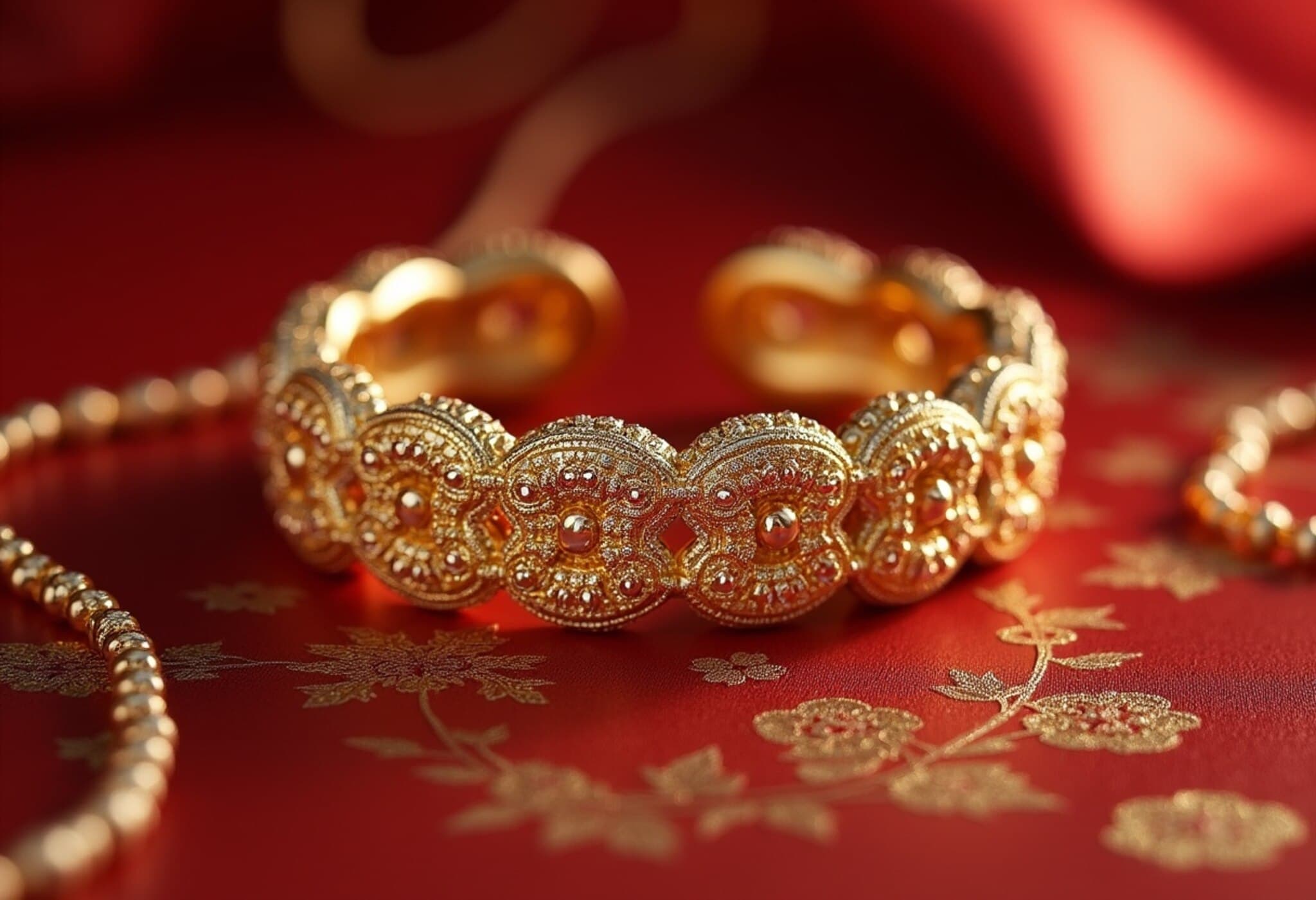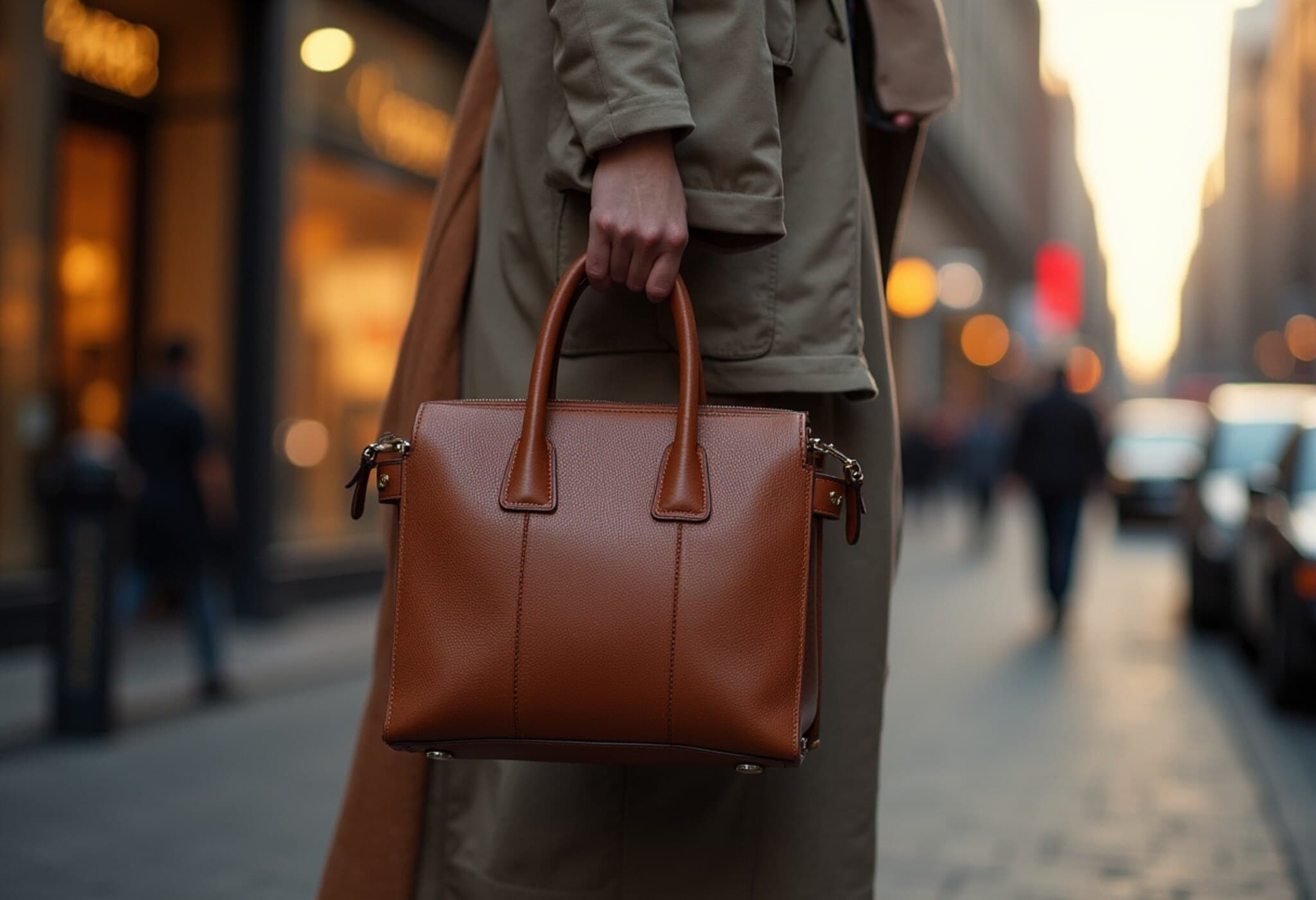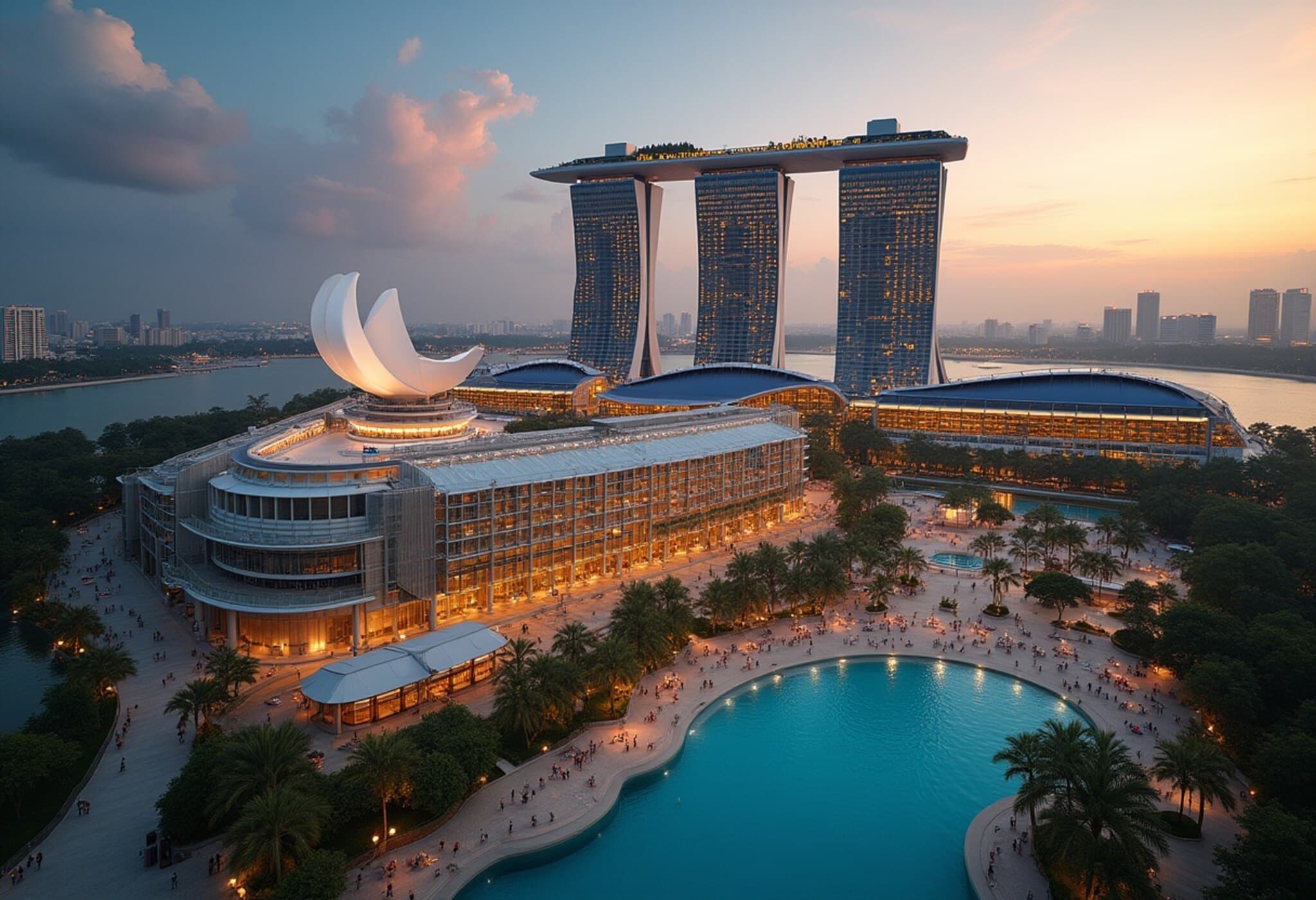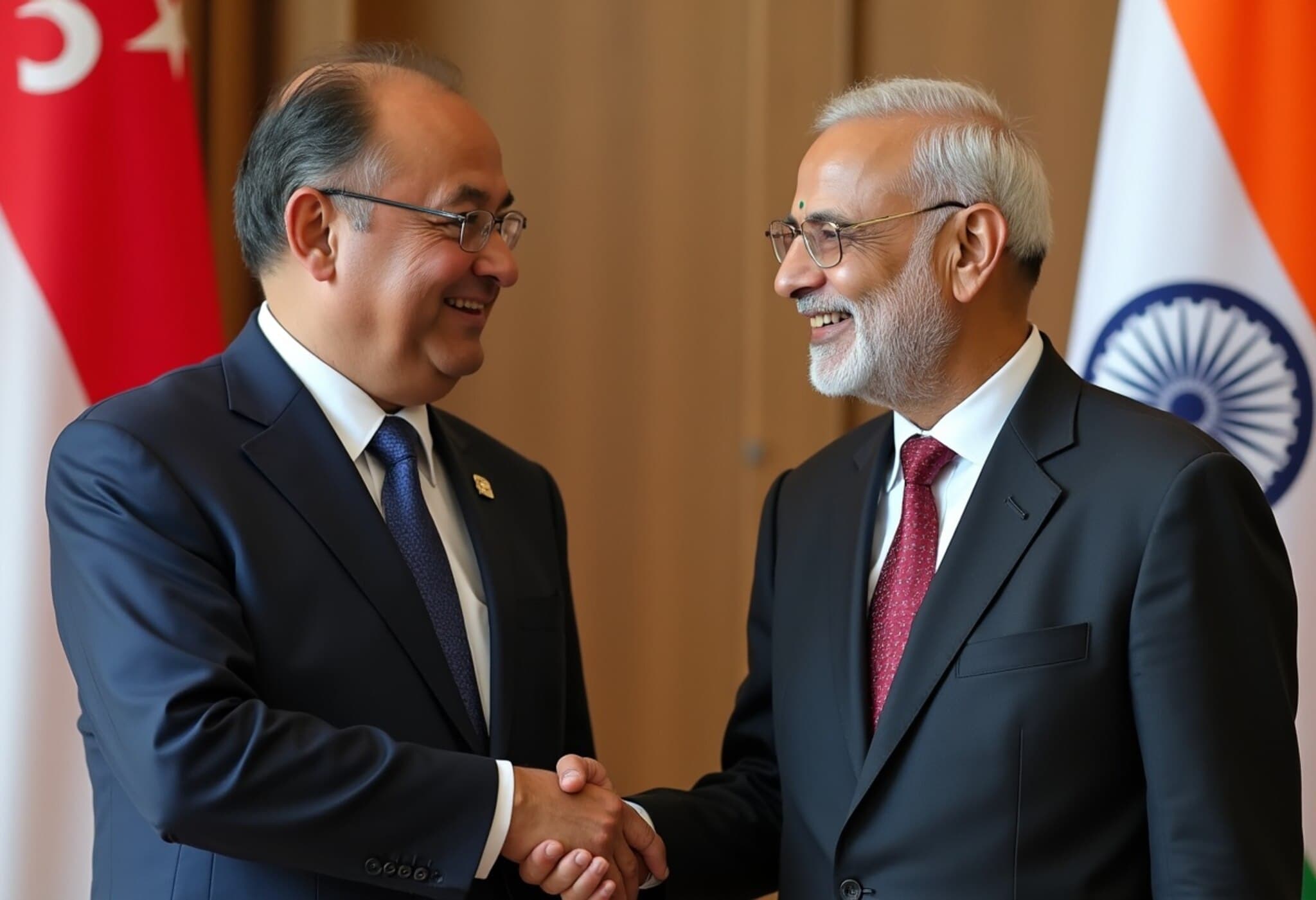Laopu Gold Debuts in Singapore, Shaking Up Global Luxury Jewelry
In the glittering heart of Singapore's Marina Bay Sands, a new contender is carving out space in the high-stakes world of luxury jewelry. Laopu Gold, a rising Chinese brand, opened its first overseas boutique on June 21, drawing eager customers who waited up to two hours to glimpse its exquisite creations. This bold move signals more than just expansion; it’s a cultural and commercial statement challenging the dominance of European luxury giants like Cartier.
Mastering Tradition to Spark Modern Luxury
Laopu Gold’s allure lies in its marriage of ancient Chinese goldsmithing techniques with contemporary aesthetics. The storefront, prominently located near the Patek Philippe boutique, showcases intricate pieces like a golden deer and a lotus sutra urn, displayed with museum-like reverence. These designs pay homage to China’s royal heritage while appealing to modern sensibilities.
Jessie Lim, a Singaporean shopper, shares her surprise: "I walked in skeptical but walked out with not one, but two pieces. The detail, like the double-layered wings of the butterfly necklace, is stunning. There’s real artistry here, and the diamonds they inset elevate the craftsmanship." Her experience reflects a deep emotional connection to the brand, beyond mere acquisition.
Global Recognition and Celebrity Endorsements
Laopu’s growing international stature was underscored when Victor "Wemby" Wembanyama, the young French NBA star, was spotted wearing Laopu’s signature "hulu" gourd-shaped pendant necklace during a recent visit to Beijing. This necklace — symbolic in Chinese culture as a charm for protection and luck — has become the brand’s bestseller on Tmall, China’s largest e-commerce platform. Its popularity underscores Laopu’s ability to resonate culturally while appealing to premium markets.
Surging Sales Amid Shifting Luxury Landscapes
Laopu’s sales tell a compelling story in contrast to established European firms. The company reported a 166% jump in Chinese revenue, reaching 9.8 billion yuan ($1.37 billion) in 2024. Its shares have soared more than 2,000% since going public in Hong Kong last June. Meanwhile, global luxury stalwarts like Richemont (owner of Cartier) have seen China sales decline, prompting warnings about intensifying competition.
Richemont cautioning shareholders about the pressure from Laopu illustrates a tectonic shift in the luxury realm. Traditional brands are compelled to innovate to maintain appeal in a market where local heritage and authenticity increasingly motivate consumer choices.
Exclusivity and Craftsmanship: Laopu’s Market Strategy
Unlike mass-market retailers, Laopu limits its retail footprint with fewer than 50 stores globally, fostering exclusivity. This strategy yields healthy returns: its gross profit margin stands at 41.2% — significantly higher than Hong Kong's legacy jeweler Chow Tai Fook’s 29.5%. By rarely offering discounts and instead raising prices biannually regardless of gold price fluctuations, Laopu sustains an aura of prestige and investment value.
For Singapore customers, the boutique introduced an exclusive diamond-inlaid gold cross, blending cultural motifs and luxury trends. Locals like Xew Ling have learned to time their visits to avoid the growing queues, sometimes making purchases during quick lunch breaks. Juliana Go recounts how entire office teams have become collectors overnight, highlighting Laopu’s social buzz.
The Road Ahead: Sustainability of Growth and Global Ambitions
Academic experts urge cautious optimism. Li Jie, director of Shanghai Jiao Tong University’s Luxury Brand Research Center, credits Laopu’s rise to years of meticulous development, addressing not just functional or emotional needs but an intertwined set of consumer desires unique to China’s burgeoning middle class.
However, Li notes that Chinese brands aspiring to global luxury status must cultivate their presence patiently, leveraging authentic storytelling and experiential marketing to embed themselves internationally. Laopu’s initial focus on Singapore — a regional hub with strong cultural ties to China and vibrant luxury tourism — is a strategic starting point.
Consultant Dave Xie of Oliver Wyman highlights that Singapore’s visa-free policies and ethnic Chinese demographic provide fertile grounds for Laopu’s test run, setting the stage for a planned Japanese market entry next year.
Broader Trends: Chinese Brands Riding a New Wave in Luxury
The success of Laopu Gold is part of a larger shift characterized by the ascendancy of Chinese brands in global luxury arenas. From Pop Mart collectibles to BYD electric vehicles, these companies are redefining international perceptions, fueled by younger consumers valuing genuine heritage over inherited prestige.
Ashley Dudarenok of ChoZan consultancy notes that this trend is strengthened by geopolitical realignments favoring Asian manufacturing and consumer preferences increasingly skeptical of Western luxury’s narratives. If Laopu balances traditional authenticity with universal appeal, it could emulate the meteoric rise once witnessed by iconic European maisons.
Editor’s Note
Laopu Gold’s ambitious leap onto the global stage is more than a business story — it’s a cultural moment reflecting China's nuanced journey from local artisan heritage to global luxury contender. The brand’s success highlights emerging consumer values prioritizing authenticity, craftsmanship, and cultural symbolism. For Western luxury houses, Laopu’s ascent is a wake-up call: to remain relevant, they must innovate while respecting evolving consumer identities across regions.
As this story unfolds, key questions remain: Can Laopu sustain its momentum beyond cultural familiarity? Will Chinese luxury brands reshape the global market power dynamics? And how will traditional European players adapt in this transforming landscape? Keeping a close eye on these developments is essential to understanding the future of luxury worldwide.



















